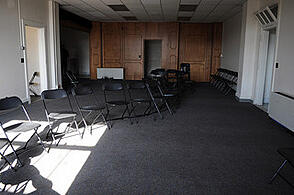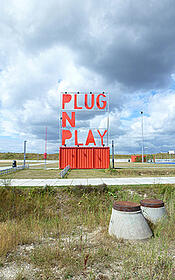 If you're only putting WiFi access points in your waiting areas, you're missing out on a lot of the potential benefits from putting WiFi in a hospital!
If you're only putting WiFi access points in your waiting areas, you're missing out on a lot of the potential benefits from putting WiFi in a hospital!
Some hospitals, noticing the trends in online reviews rating things like WiFi quality, have tried to "split the difference" and only install in waiting areas or the front lobby. While it's better than nothing, it's not going to do too much to bring in more patients, or make them happy about their stay during recuperation.
The best way to install WiFi in a hospital is across the whole facility, so its benefits can be enjoyed by patients, visitors, and staff alike. With a bit of pre-planning, you can cover the entire area with a minimum of access points.

Five Tips For The Best WiFi Coverage In Your Healthcare Facility
1 - Keep access points away from EM sources.
Hospitals tend to have a lot of large equipment that throws out a lot of electro-magnetic interference, and those can quickly wreck a WiFi signal. Since even a standard breakroom microwave can interfere with WiFi, you can imagine how much trouble an MRI can cause!
Areas with machines like these will be a WiFi dead zone. That's unavoidable, so don't bother trying to install APs nearby.
2 - Investigate your building's internal structure.
It's a good idea to consult architectural plans when preparing to set up WiFi access points, because common materials in the walls can interfere with the signal. Thick concrete, steel rebar, and water sources like piping will all create significant barriers to WiFi.
In some cases, it's possible to work around these obstacles by moving the AP. In others, you may need to choose different or more powerful antennas to punch through the walls.
3 - Have a predictive usage heatmap made.
One of the best ways to ensure a smooth WiFi implementation with plenty of coverage is to consult with a networking expert to create a heatmap of your facility. They'll tour the building and consult on how your WiFi will be used, then create a detailed diagram of optimal AP placement.
It costs very little money to bring in consultants, but it's almost always money saved because it ensures you get the right WiFi layout the first time, and without over-spending on too many access points.
4 - Consider tiered access speeds. 
One issue with implementing WiFi in a large facility is that of bandwidth. How will the network manage and balance speeds, with a large number of patients and guests all fighting for access?
A "tiered" system where basic WiFi is free, but high-speed services cost an extra daily fee, are becoming increasingly popular. It lightens the load on the everyday free network, while allowing patients with longer stays to enjoy the benefits of in-room WiFi such as video streaming.
Either way, the costs are minimal and will be more than made up for in access fees.
5 - BlueSocket makes expansions easy.
While there are multiple different network architectures that can be deployed successfully in a hospital, we tend to recommend the ADTRAN BlueSocket standard as the basis for healthcare networks. BlueSocket is the easiest WiFi technology to set up and configure, with plug-and-play access points that need minimal configuration.
Once a BlueSocket network is in place, expanding it is literally a two-minute process. You simply plug in a new access point, and then register its serial number on the network. Within seconds, it's up and running and ready for use.
There's no reason for hospitals to spend extra time or money maintaining their network. BlueSocket makes it simple.
Focus On The Patients For Your Hospital WiFi
A hospital WiFi implementation should be patient-focused. WiFi improves your reviews and ratings, as well as giving you new options for getting critical information into patients' hands. A well-planned WiFi rollout will bring ongoing benefits for years.
Ready for an upgrade? Contact Hummingbird for a free consultation!
photo credit: Joe Mabel via photopin cc photo credit: orphan girl via photopin cc










